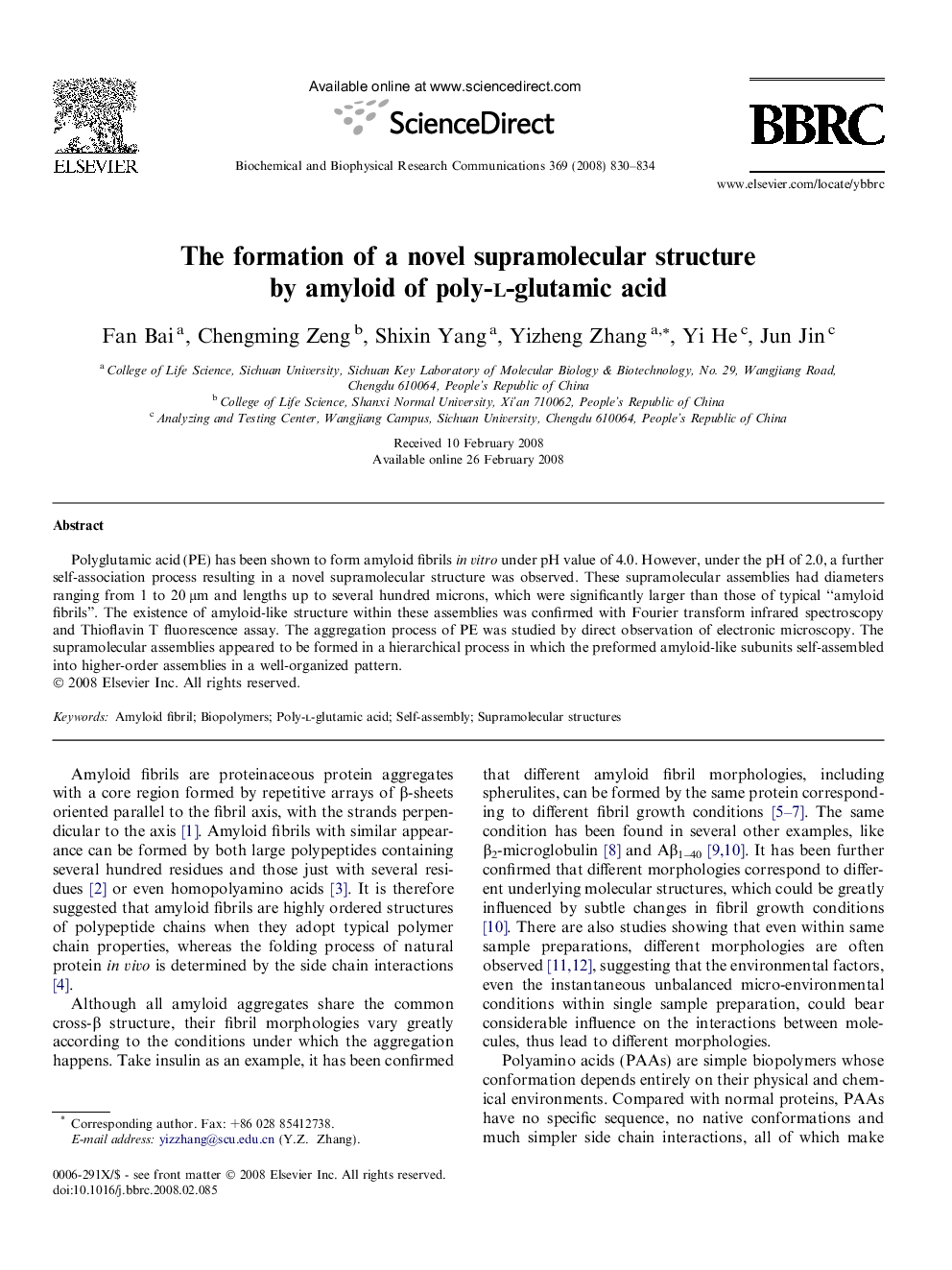| Article ID | Journal | Published Year | Pages | File Type |
|---|---|---|---|---|
| 1935979 | Biochemical and Biophysical Research Communications | 2008 | 5 Pages |
Abstract
Polyglutamic acid (PE) has been shown to form amyloid fibrils in vitro under pH value of 4.0. However, under the pH of 2.0, a further self-association process resulting in a novel supramolecular structure was observed. These supramolecular assemblies had diameters ranging from 1 to 20 μm and lengths up to several hundred microns, which were significantly larger than those of typical “amyloid fibrils”. The existence of amyloid-like structure within these assemblies was confirmed with Fourier transform infrared spectroscopy and Thioflavin T fluorescence assay. The aggregation process of PE was studied by direct observation of electronic microscopy. The supramolecular assemblies appeared to be formed in a hierarchical process in which the preformed amyloid-like subunits self-assembled into higher-order assemblies in a well-organized pattern.
Related Topics
Life Sciences
Biochemistry, Genetics and Molecular Biology
Biochemistry
Authors
Fan Bai, Chengming Zeng, Shixin Yang, Yizheng Zhang, Yi He, Jun Jin,
